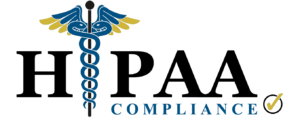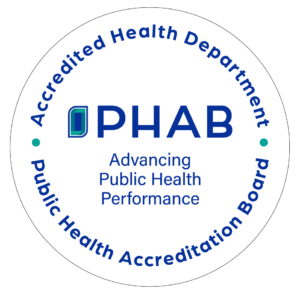Steadily climbing summer temperatures, accompanied by higher humidity combine to cause a rising heat index that greatly increases the seasonal risk of heat-related illness. Individuals of all ages, particularly the very young, the elderly and those with chronic medical conditions or who are taking medication, are advised to exercise extreme caution.
Especially among those engaged in physical activity, prolonged heat exposure among even young, healthy individuals can result in recreational as well as occupational illnesses and injuries. Persons who work or recreate outside in direct exposure to the sun, or indoors in excessive heat for any extended period of time must be mindful of the risks and be exceptionally careful.
Also at increased risk are those that live alone in hot, un-airconditioned accommodations. Neighbors, friends and relatives are urged to remember to check regularly with family members, co-workers, friends, and neighbors that may fall into that category to make sure they are taking all necessary precautions to prevent becoming sick from over-heating.
Types of Heat Illness:
Heat illness takes many forms, including heat fatigue, heat syncope (sudden dizziness after exercising in the heat), heat cramps, heat exhaustion or the most serious, heat stroke. Heat stroke, is an advanced form of heat stress that occurs when the body is overwhelmed by heat and unable to control its temperature. Someone with a body temperature above 104 degrees is likely suffering from heat stroke and may have symptoms of confusion, combativeness, strong rapid pulse, lack of sweating, dry flushed skin, faintness, staggering, possible delirium or coma. Seek immediate medical attention for a person with any of these symptoms, especially an older adult.
The following list can help you recognize the symptoms of different heat-related illnesses:
1. Heat Rash: Heat rash is a skin irritation caused by excessive sweating during hot, humid weather. It can occur at any age but is most common in young children. Heat rash looks like a red cluster of pimples or small blisters.
2. Heat cramps: A person who has been exercising or participating in other types of strenuous activity in the heat may develop painful muscle spasms in the arms, legs, or abdomen referred to as heat cramps. The body temperature is usually normal, and the skin will feel moist and cool, but sweaty.
3. Heat syncope: Someone who experiences heat syncope (fainting) will experience the sudden onset of dizziness or fainting after exposure to high temperatures, particularly after exercising in the heat. As with heat cramps, the skin is pale and sweaty but remains cool. The pulse may be weakened, and the heart rate is usually rapid. Body temperature is normal.
4. Heat exhaustion: Heat exhaustion is a warning that the body is getting too hot. Those most prone to heat exhaustion include elderly people, people with high blood pressure, and people working or exercising in a hot environment. A person with heat exhaustion may be thirsty, giddy, weak, uncoordinated, nauseous, and sweating profusely. As with heat syncope and heat cramps, the body temperature is usually normal in heat exhaustion. The heart rate (pulse rate) is normal or elevated. The skin is usually cold and clammy.
5. Heat stroke: Heat stroke is a serious, life-threatening condition that occurs when the body loses its ability to control its temperature. Victims of heat stroke almost always die, so immediate medical attention is essential when problems first begin. In heat stroke, a person develops a fever that rapidly rises to dangerous levels within minutes. A person with heat stroke usually has a body temperature above 104 F (40 C), but the temperature may rise even higher. Other symptoms and signs of heat stroke may include confusion, combativeness, bizarre behavior, feeling faint, staggering, strong rapid pulse, dry flushed skin, and lack of sweating. Delirium or coma can also result from heat stroke.
While heat cramps, heat syncope, and heat exhaustion may all be present in mild degrees, you should always contact a doctor or seek emergency medical attention if the symptoms of these conditions are severe or worsen with time.
Heat stroke is a true medical emergency. If a person has the symptoms of heat stroke, you should notify emergency services (911) immediately.
Prevention Measures:
Basic strategies are key to preventing heat illness and are focused on limiting exposure to excessive heat, limiting activity, and staying hydrated by drinking more non-caffeinated, non- alcoholic fluids than usual.
Determining Heat Illness Risk:
The risk for heat illness is a combination of the outside temperature along with the general health and lifestyle of the individual. Health-related factors that may increase risk include:
- The inability to perspire, caused by medications such as diuretics, sedatives, tranquilizers and certain heart and blood pressure drugs
- Taking several drugs for various conditions. It is important, however, to continue to take prescribed medication and discuss possible problems with a physician.
- Being substantially overweight or underweight
- Drinking alcoholic beverages
- Being dehydrated
- Age-related changes to the skin such as poor blood circulation and inefficient sweat glands
- Heart, lung and kidney diseases, as well as any illness that causes general weakness or fever
- High blood pressure or other conditions that require changes in diet. For example, people on salt-restricted diets may be at an increased risk. However, salt pills should not be used without first consulting a doctor.
Lifestyle factors that also can increase risk include extremely hot living accommodations, lack of transportation, overdressing, visiting overcrowded places and not understanding how to respond to changing weather conditions. Individuals at special risk should stay indoors on particularly hot and humid days, especially when there is an air pollution alert in effect. People without fans or air conditioners should go to places such as shopping malls, movie theaters, libraries or cooling centers.
What to Do In the Event of Heat Illness:
If you suspect that someone is suffering from a heat-related illness, respond immediately by taking the following actions:
- Get the person out of the sun and into an air-conditioned or other cool place.
- Offer fluids such as water, fruit and vegetable juices, but avoid caffeinated and alcoholic beverages.
- Encourage the individual to shower, bathe or sponge off with cool water; if he or she is unable, do so for the person.
- Apply a cold, wet cloth to the wrists, neck, armpits, and/or groin, places where blood passes close to the surface and the cold cloths can help cool the blood.
- Urge the person to lie down and rest, preferably in a cool place.
- If heat stroke is suspected, call 9-1-1 and/or seek medical help immediately.
Additional Information:
Several cooling centers are accessible at locations throughout Harford County. The collaborative decision by the County’s Emergency Operations Center and the County Health Officer to open these centers is based on National Weather Service heat index information. In the event of these openings, communities are provided timely notification by means of public service announcements on radio, television and in print media.
For more information on heat-related illness, visit the National Centers for Disease Control website at www.cdc.gov/niosh/topics/heatstress or call the Harford County Health Department at 410-612-1781. For a free copy of the NIA’s Age Page on hyperthermia in English or in Spanish, contact the NIA Information Center at 1-800-222-2225 or go to http://www.niapublications.org/agepages/hyperther.asp or www.niapublications.org/agepages/hyperther-sp.asp for the Spanish-language version.
Additional informational resources on the topic of heat illness, including Spanish language websites, include:
- Maryland Department of Health and Mental Hygiene:http://dhmh.maryland.gov/extremeheat
- Maryland Emergency Management Agency:http:www.mema.state.md.us/MEMA/content_page.jsp?TOPICID=othernds
- Centers for Disease Control and Prevention:http://www.bt.cdc.gov/disasters/extremeheat/
- CDC Spanish Translation:http://www.bt.cdc.gov/disasters/extremeheat/es/
- Centers for Disease Control and Prevention:http://www.cdc.gov/niosh/topics/heatstress/
- Environmental Protection Agency, Spanish Translation: http://www.epa.gov/aging/resources/factsheets/itdhpfehe_Spanish_100-F-08-076.pdf


